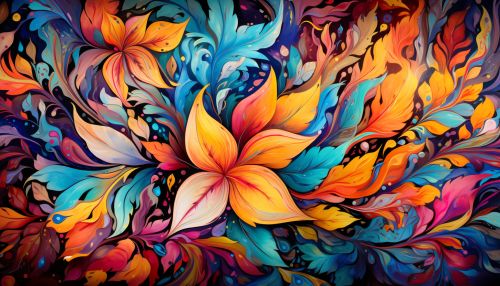Artificial Intelligence in Art
Introduction
Artificial Intelligence (AI) has been increasingly utilized in various fields, and the realm of art is no exception. The integration of AI into art has led to the emergence of a new genre of art, often referred to as AI Art or Algorithmic Art. This form of art involves the use of algorithms and machine learning techniques to create or assist in the creation of artworks.


History
The history of AI in art can be traced back to the mid-20th century, when artists and computer scientists began to explore the potential of computers and algorithms in creating art. Early pioneers in this field include Harold Cohen and his program AARON, which was capable of producing original artworks. As technology advanced, so did the complexity and sophistication of AI art, with modern AI artists using advanced machine learning techniques such as deep learning and generative adversarial networks (GANs).
Techniques
There are several techniques used in AI art, each with its own unique characteristics and applications.
Machine Learning
Machine learning is a subset of AI that involves the use of statistical techniques to enable machines to improve at tasks with experience. In the context of art, machine learning algorithms can be trained on a dataset of artworks, learning to generate new pieces that mimic the style of the training data.
Generative Adversarial Networks
Generative adversarial networks (GANs) are a type of machine learning model that consist of two parts: a generator and a discriminator. The generator creates new data instances, while the discriminator evaluates them for authenticity; i.e., whether they belong to the actual training set or were created by the generator. In the field of AI art, GANs have been used to create realistic and complex artworks.
Neural Style Transfer
Neural style transfer is a technique used in AI art that involves applying the style of one image to another. This is achieved by using a pre-trained convolutional neural network to separate the content and style of different images, and then combining them to create a new image.
Applications
AI art has a wide range of applications, from creating original artworks for exhibitions and sales, to assisting artists in their creative process.
Art Creation
One of the most prominent applications of AI in art is the creation of original artworks. These artworks can be generated entirely by AI, or they can be the result of a collaboration between an artist and an AI. For example, the artwork "Portrait of Edmond de Belamy", which was created by a GAN, was sold at auction for over $400,000.
Artistic Assistance
AI can also be used to assist artists in their creative process. For example, AI can be used to generate ideas or provide suggestions for artists, or it can be used to automate certain aspects of the art creation process, allowing artists to focus on other elements of their work.
Criticisms and Controversies
While AI art has been praised for its innovation and potential, it has also been the subject of criticism and controversy. Some critics argue that AI art lacks the emotional depth and intentionality that comes from human artists. Others question the ethics of AI art, particularly in regards to authorship and copyright.
Future Directions
The future of AI in art is likely to involve further integration of AI into the art creation process, as well as the development of new techniques and applications. As AI technology continues to advance, it is likely that the capabilities of AI art will also continue to expand.
